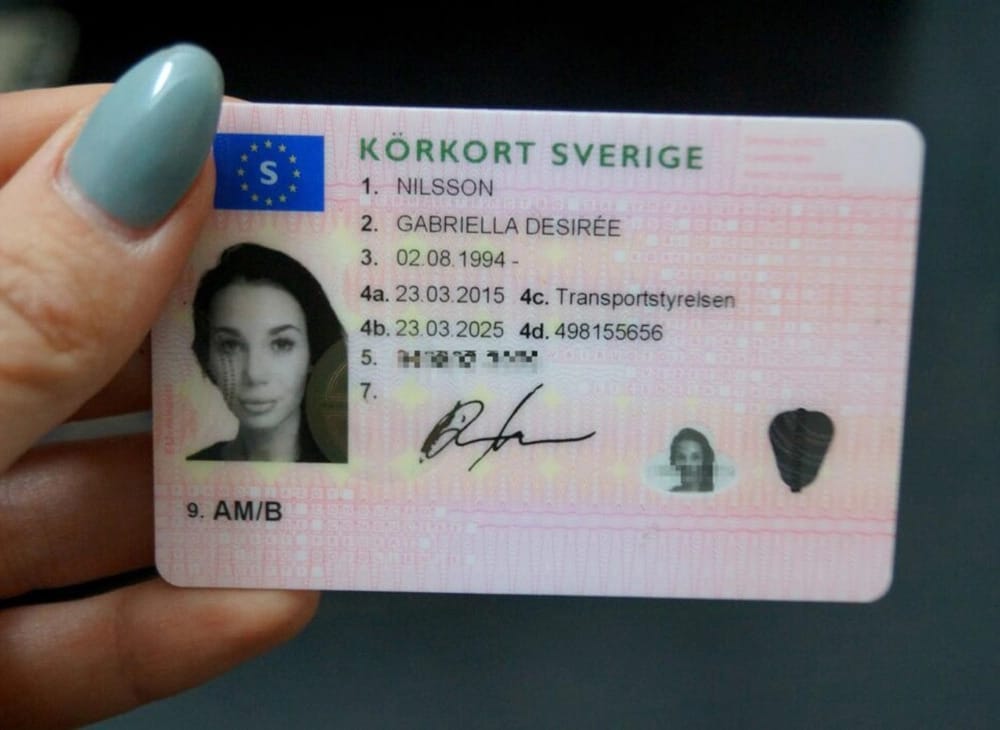There's A Reason Why The Most Common Swedish Driving License Online De…
페이지 정보

본문
Navigating the World Without a Driver's License: Exploring Alternatives and Implications
In today's world, where movement is a cornerstone of daily life, the concept of living without a driver's license may seem overwhelming. However, for some individuals, the choice to give up a driver's license is a conscious option driven by various aspects, consisting of environmental issues, körkort Professionell expense, and personal choice. This short article dives into the options to driving and the ramifications of living without a driver's license, supplying a comprehensive guide for those considering this lifestyle.
Comprehending the Decision
Picking not to have a driver's license is a personal decision that can originate from several reasons. For some, it's a commitment to decreasing their carbon footprint and promoting sustainable living. Others find the expense of owning and preserving a car prohibitive, while some just prefer the convenience and freedom of other modes of transport. Despite the motivation, living without a driver's license requires mindful planning and a determination to adapt.

Alternatives to Driving
Public Transportation
- Buses and KöPa Taxilicens KöRkort Online Trains: Public transport systems, such as buses and trains, are frequently the most reliable and economical options. They are accessible in most city locations and offer a structured way to browse cities and rural regions.
- Train and Light Rail: In larger cities, trains and light rail systems use quick and effective travel, often bypassing rush hour and lowering travel time.
Ride-Sharing Services
- Uber and Lyft: These popular ride-sharing apps supply on-demand transport, making it easy to navigate without a car. They are particularly helpful for late-night travel and in areas with restricted public transport.
- Carpooling: Joining or forming carpool groups can reduce expenses and ecological effect. Lots of community platforms and apps assist in carpooling for regular commutes.
Bikes and E-Scooters
- Bikes: Cycling is a healthy and eco-friendly way to take a trip, especially for much shorter distances. Lots of cities have actually devoted bike lanes and bike-sharing programs to encourage this mode of transportation.
- Electric Scooters: E-scooters are a trendy and hassle-free alternative for quick, brief trips. They are frequently readily available through rental services in urban areas and can be an enjoyable option to traditional modes of transportation.
Walking and Jogging
- Strolling: For those living in walkable neighborhoods, strolling is an easy and effective way to stay active and get around. It's free, requires no unique devices, and is good for the environment.
- Jogging: Similar to strolling, jogging can be a healthy and low-priced way to take a trip, particularly for short distances.
Electric and Hybrid Vehicles
- Electric Scooters and Köpa taxilicens Körkort Svenskt körkort - fsquan8.cn, Bikes: For those who still desire the convenience of a personal lorry but are worried about the environment, electric scooters and bikes are a feasible alternative. They are low-maintenance and produce fewer emissions.
- Hybrid Cars: If the choice to prevent a driver's license is mostly due to environmental issues, however the requirement for a car is inevitable, hybrid vehicles offer a happy medium. They combine traditional fuel engines with electrical motors to reduce fuel intake and emissions.
Telecommuting and Remote Work
- Work from Home: Many companies now offer remote work alternatives, enabling staff members to work from home or other places. This can substantially decrease the requirement for everyday commuting and the associated costs.
- Virtual Meetings: Technology has actually made it possible to conduct company meetings and other interactions practically, additional lowering the need for travel.
Ramifications of Living Without a Driver's License
Financial Savings
- Lowered Vehicle Costs: Not having a car means avoiding costs such as car payments, insurance, upkeep, and fuel.
- Mass Transit Costs: While public transport does have costs, they are generally lower than those associated with owning a car.
Environmental Impact
- Lower Carbon Emissions: By preventing using individual automobiles, individuals can substantially reduce their carbon footprint, adding to a more sustainable environment.
- Decreased Traffic Congestion: Fewer cars and trucks on the roadway can lead to minimized traffic blockage, making travel more effective for everyone.
Health Benefits
- Increased Physical Activity: Using alternatives like strolling, jogging, and biking can improve physical health and psychological well-being.
- Lowered Stress: Avoiding the daily troubles of driving, such as traffic and parking, can cause a more relaxed and worry-free lifestyle.
Social and Community Engagement
- Community Connections: Relying on public transportation or ride-sharing services can cultivate a sense of neighborhood and social interaction.
- Assistance for Local Businesses: Walking or cycling to regional businesses can help support the regional economy and lower dependence on big, environmentally unfriendly corporations.
Legal and Practical Considerations
- Recognition Issues: In lots of countries, köpa Taxilicens KöRkort online a driver's license serves as a main type of identification. People without a license might need to carry alternative forms of ID, such as a passport or state-issued ID card.
- Travel Restrictions: Without a driver's license, travel to remote locations or locations with limited public transport can be difficult. Planning ahead and utilizing alternative transportation approaches is essential.
Frequently asked questions
Q: How can I navigate if I live in a backwoods without a driver's license?
- A: In rural areas, choices like ride-sharing services, carpooling, and mass transit may be limited. Think about signing up with community groups or Köpa A2 Körkort Online platforms to discover regional carpooling choices. Electric scooters and bikes can likewise be beneficial for shorter distances. In addition, numerous rural locations have community transport services that can be accessed for important trips.
Q: Can I still travel worldwide without a driver's license?
- A: Absolutely. A driver's license is not needed for most international travel. However, you might need a passport or other kinds of identification. For countries where driving is required, you can lease a car with a valid driver's license or use regional transportation services.
Q: What are the very best apps for discovering ride-sharing and carpooling alternatives?
- A: Popular apps for ride-sharing consist of Uber, Lyft, and Bolt. For carpooling, Waze Carpool, Ridester, and Scoop are highly advised. These apps frequently provide real-time information on offered rides and help connect you with drivers heading in the exact same direction.
Q: How do I handle without a driver's license if it is required for lots of types of recognition?
- A: In numerous locations, a state-issued ID card or a passport can serve as a primary form of recognition. It's also an excellent concept to carry several kinds of ID, such as a credit card or a citizen registration card, to guarantee you are gotten ready for numerous scenarios.
Q: Are there any health threats related to using public transport?
- A: While mass transit can expose individuals to a higher danger of transmittable illness, particularly in crowded conditions, the benefits frequently surpass the risks. Practicing good health, such as cleaning hands frequently and wearing a mask, can help alleviate these dangers. Additionally, numerous public transport systems have carried out safety measures to protect travelers.
Q: What are the environmental benefits of not driving a car?
- A: Not driving a car can substantially reduce your carbon footprint. Vehicles are a significant source of greenhouse gas emissions, and by going with public transport, cycling, or walking, you can add to a healthier environment. This also assists decrease air pollution and traffic congestion, enhancing total lifestyle.
Living without a driver's license is a practical and often helpful option for lots of individuals. By exploring and utilizing alternative modes of transportation, one can save cash, decrease their environmental impact, and enhance their health and wellness. While there are obstacles, such as browsing recognition and travel problems, the benefits often make the effort beneficial. Whether driven by personal worths or useful considerations, the decision to give up a driver's license can lead to a more sustainable and fulfilling lifestyle.
Additional Resources
- Public Transportation Apps: Transit, Moovit, Citymapper
- Biking and Walking Apps: Strava, MapMyRide, Google Maps
- Community Carpooling Platforms: Waze Carpool, Ridester, Scoop
- Remote Work and Telecommuting Tools: Zoom, Microsoft Teams, Slack
By welcoming these options, people can produce a lifestyle that aligns with their values and requirements, contributing to a more sustainable and connected world.

- 이전글What's Holding Back The Buy A C Driving License Online Industry? 25.04.09
- 다음글14 Businesses Doing A Superb Job At Exchange Driver's License France 25.04.09
댓글목록
등록된 댓글이 없습니다.
